Resurfacing a Sidewalk is Easy to DIY
Updated: Feb. 27, 2023
A fresh, perfect surface for old concrete and a uniform look for new repairs.
Sponsored by Sakrete
I recently replaced a section of sidewalk using Sakrete concrete mix. It was a huge improvement. But next to the new concrete, the old sidewalk looked kind of shabby—pitted, flaking and worn. Plus, the old concrete was a darker gray.
Before:
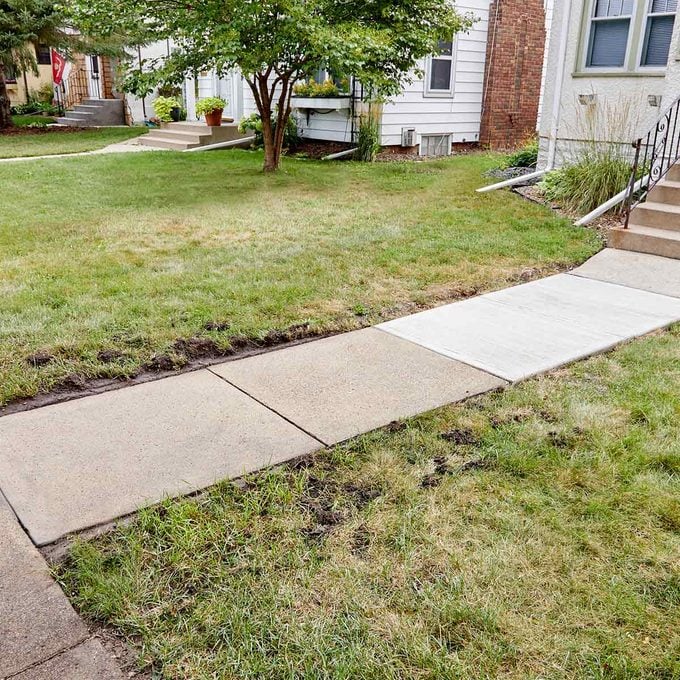
After:
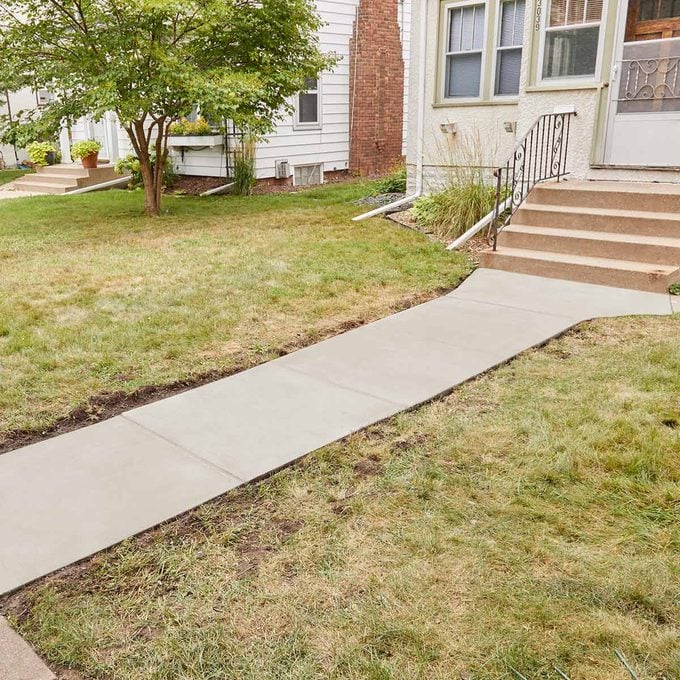
I’m all about matching the old with the new. Sakrete Flo-Coat Concrete Resurfacer allowed me to do just that, and it added a durable, perfect surface to the entire sidewalk.
This was my first time at using Sakrete Flo-Coat Concrete Resurfacer, and there was a learning curve. I’ll pass along some lessons below.
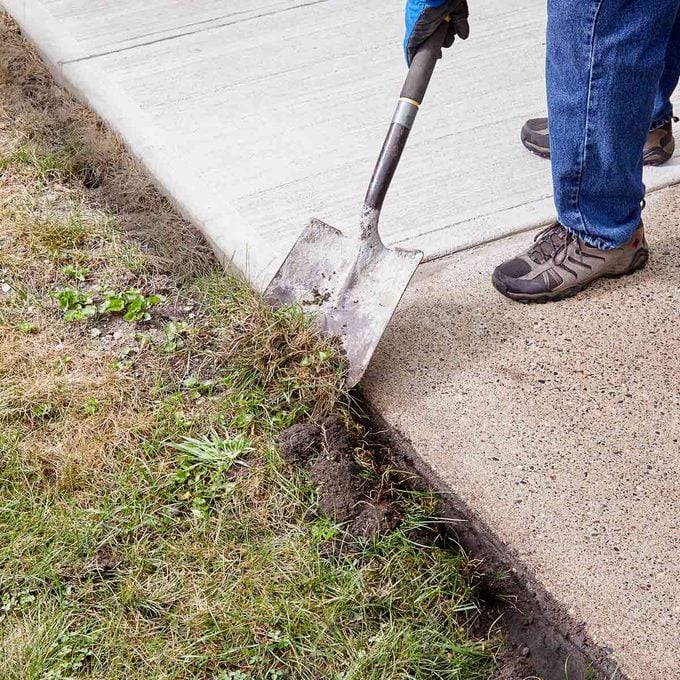
To prep, I power-washed the old concrete and the new, which had cured for a month. The next day I edged along the sidewalk with a shovel to clear away overhanging grass and create a small trench. A deeper, wider trench would have been much better (more on that below).
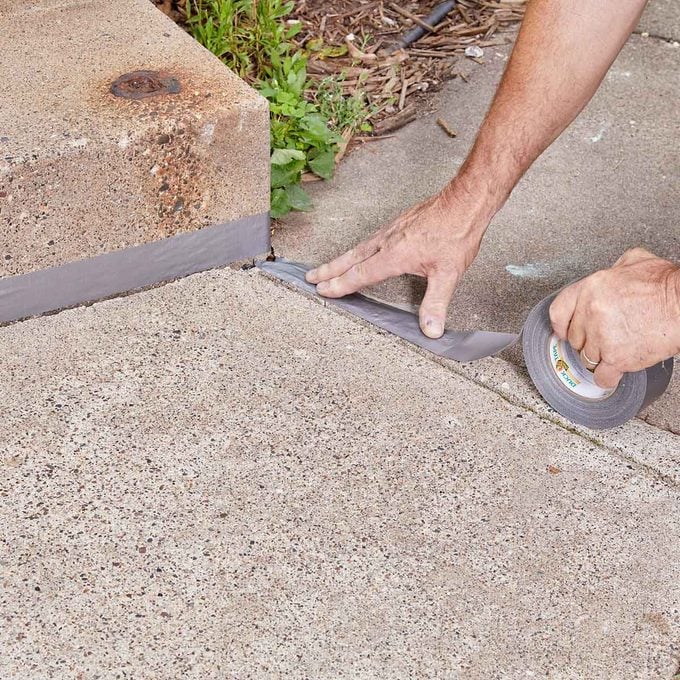
To protect areas I didn’t want to coat, I masked the adjoining concrete surfaces with duct tape. Duct tape adheres well to concrete. Masking tape doesn’t.
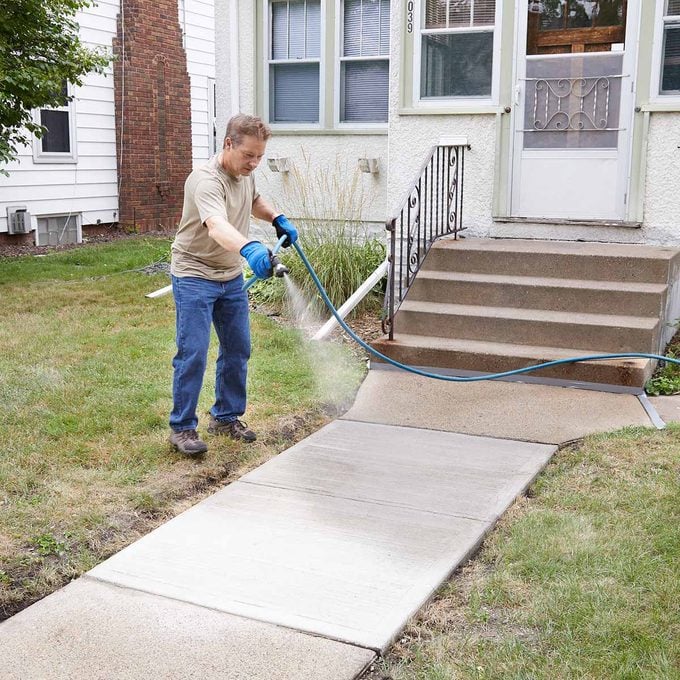
Surfaces that are dry quickly rob a mix of water and inhibit easy spreading. I misted the entire sidewalk before I began applying the product. I made sure it was thoroughly damp but there was no puddling. This is critical.
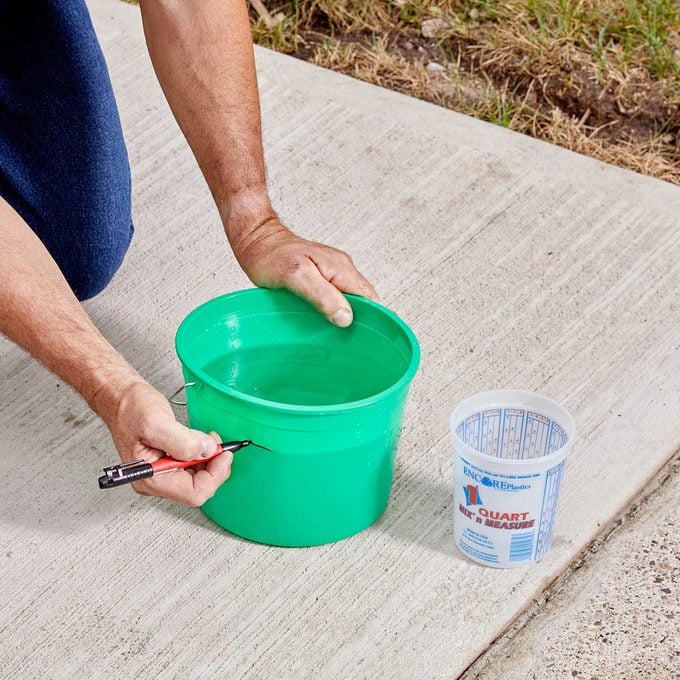
I marked a container with a black line to indicate the 3-1/2 qts. of cool water required for each 40-lb. bag. I wanted to make sure my mix was uniform from one batch to the next.
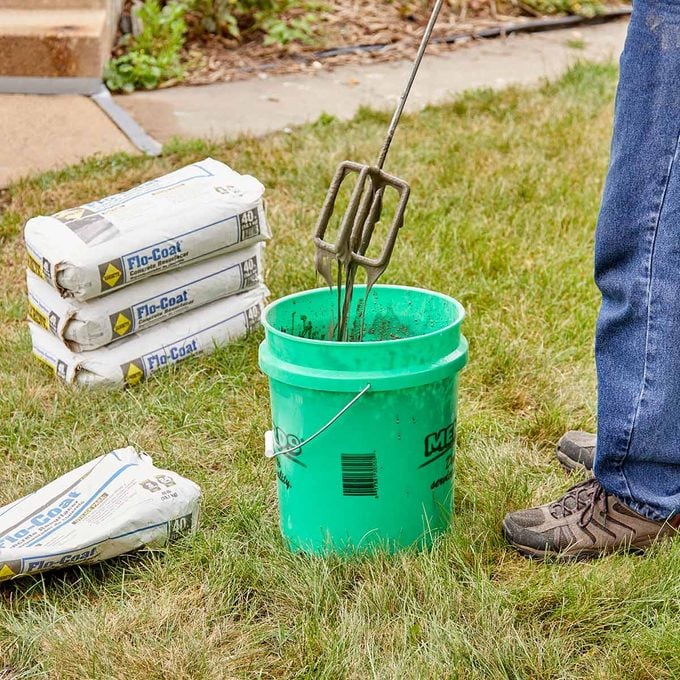
After adding about 3 qts. of the water to a bucket, I slowly introduced the Sakrete Flo-Coat Concrete Resurfacer while mixing with a heavy-duty drill. I then poured in the last of the water and blended the mix thoroughly. I tried to keep the air bubbles to a minimum. After letting the mix slake for a couple of minutes, I mixed the contents one more time.
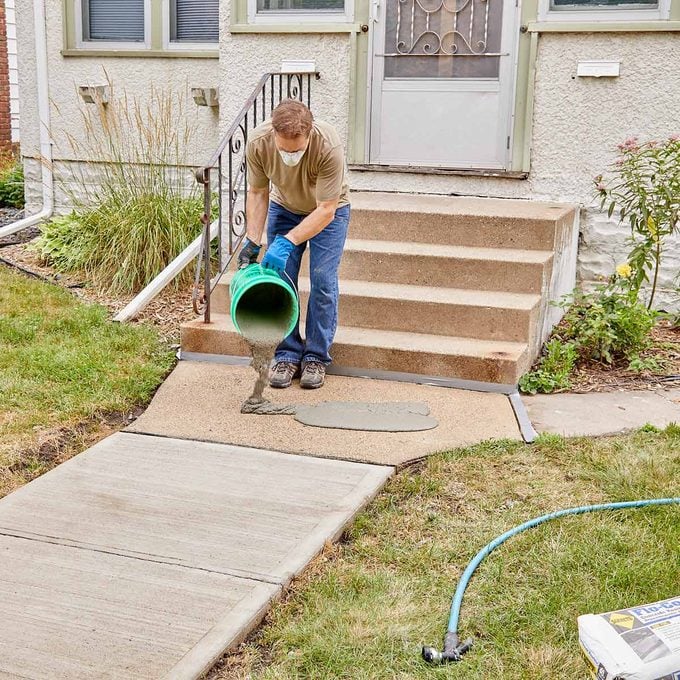
I poured resurfacer across the first section, doing my best to distribute it evenly over the area.
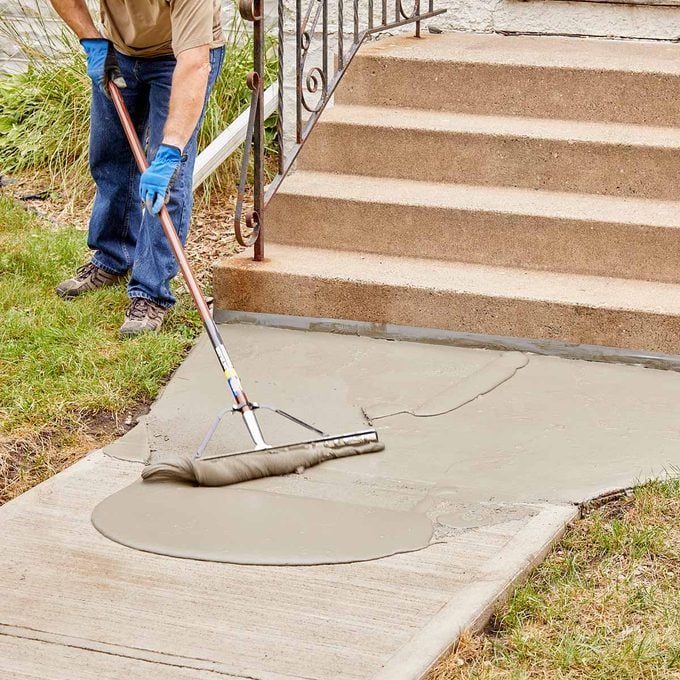
I used a squeegee to spread the mix across the entire surface to a depth of just over 1/8 in. Although I used the squeegee to push and pull the mix across the section, I always finished by pulling across the slab in the same direction.
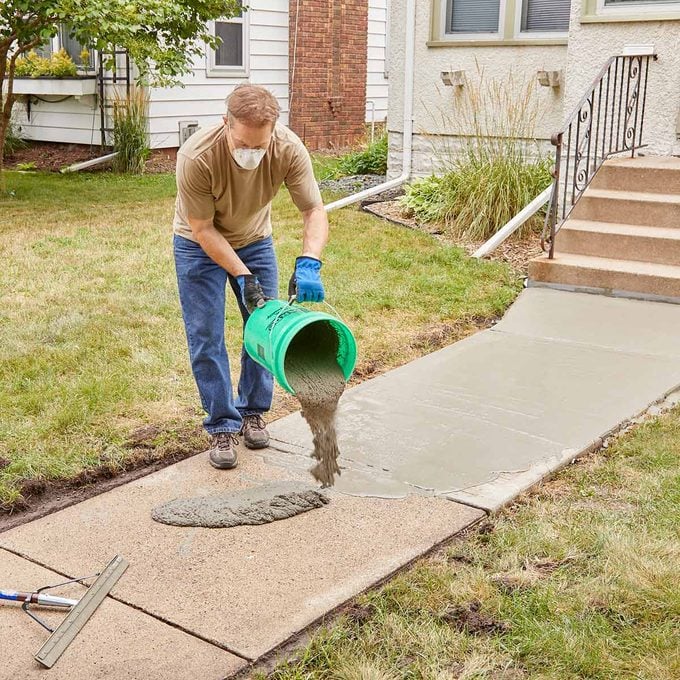
I continued this process until I had coated the entire walk. Like any cement-based product, Flo-Coat has limited working time. To avoid interruptions, I had a helper mix additional buckets while I kept pouring and spreading.

As the coating began to harden, I used a mortar rake to re-form the control joints. If you leave a joint filled, you risk cracks in the future.

For better traction, I applied a broom finish using a soft-bristle push broom. I found that brooming within 15 minutes of the initial pour worked best, but this depends on the temperature and humidity. I watched the surface and broomed when the sheen evaporated. I had to keep moving because once Sakrete Flo-Coat Concrete Resurfacer begins to harden, it becomes difficult to broom.
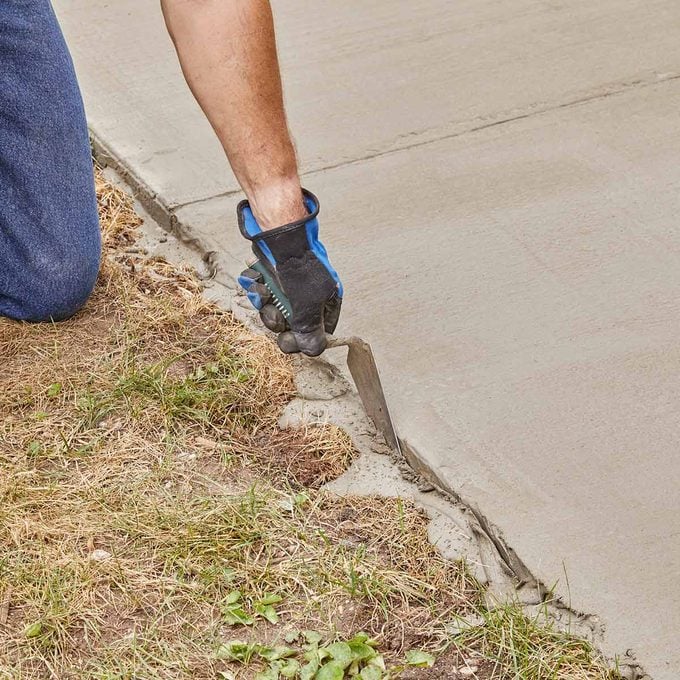
When the mix was firm but not hard, I used a trowel to scrape away any excess along the edge of the concrete. I didn’t want this material to harden because it would be tedious to remove later.
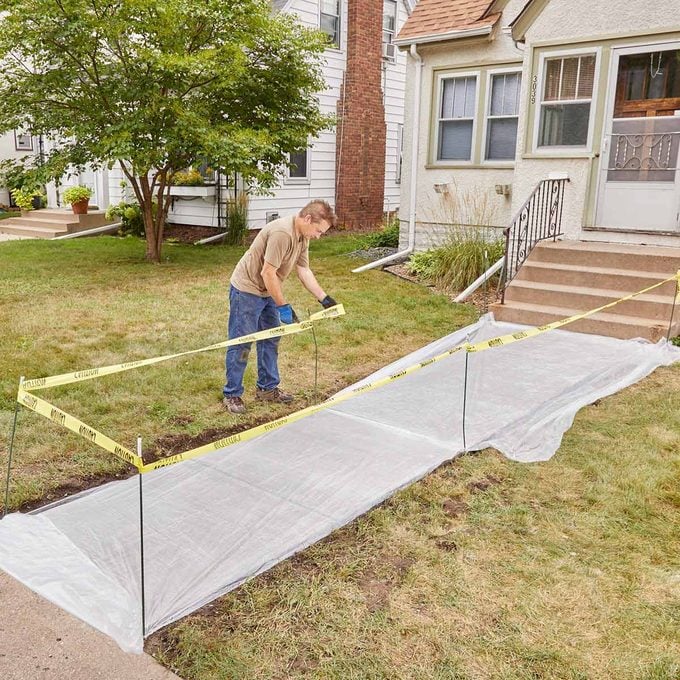
Finally, I covered the sidewalk with plastic to keep the Sakrete Flo-Coat Concrete Resurfacer damp and to aid in curing. This ensures good bonding and a strong surface.
Lessons learned
Good preparation is critical. Sakrete Flo-Coat hardens fast. Working time for spreading is about 10 minutes. I was well prepared and had a helper to continue the mixing process while I applied the coating. I had no problems, but an unexpected snag could have caused big headaches.
Trench along edges. My narrow trenches weren’t enough. I had to carefully spread along the edges to avoid dragging dirt particles in with the squeegee. I missed coating some edge areas as a result and had to touch them up with a trowel. Make your trenches at least 4 in. wide and a couple inches deep.
A redo is easy. My first coat wasn’t quite perfect. The areas that I had troweled were evident, and my broom finish was very inconsistent. Since Sakrete Flo-Coat Concrete Resurfacer can be applied in coats to achieve up to 1/2 in. in finished thickness, I just applied a second 1/8-in. coat. With some experience under my belt, the second coat took just over an hour. (The first took twice as long.) And the result was absolute perfection.
Learn more about Sakrete Flo-Coat Concrete Resurfacer
— Tom Dvorak, Contributing Editor